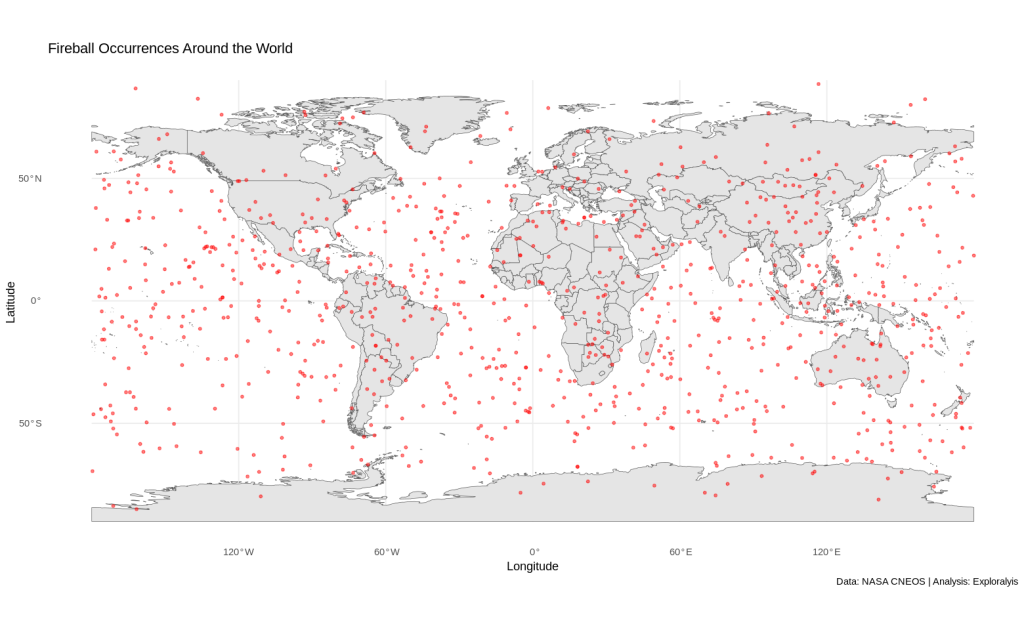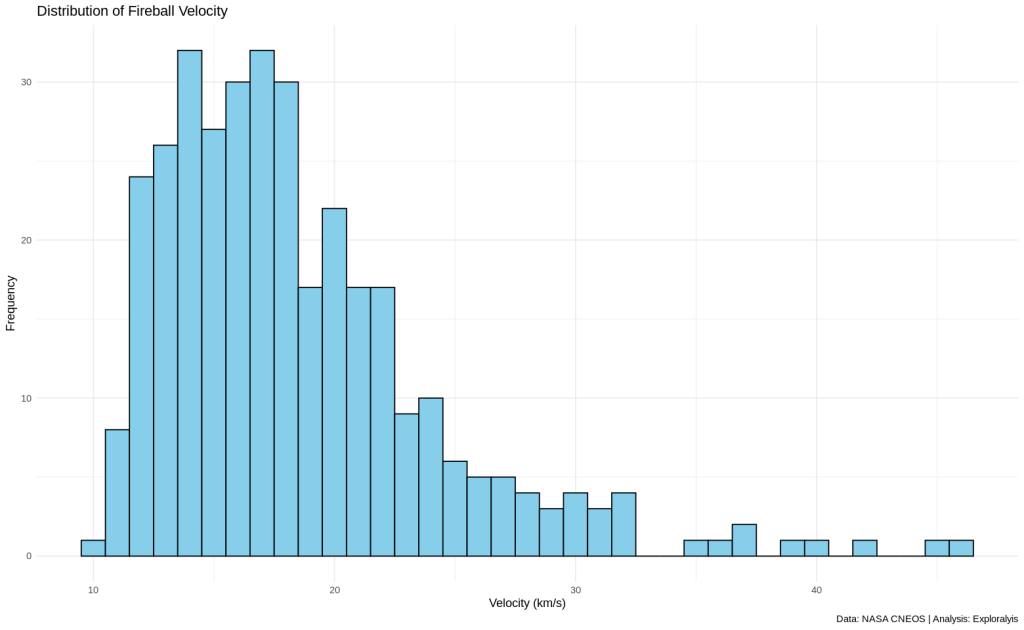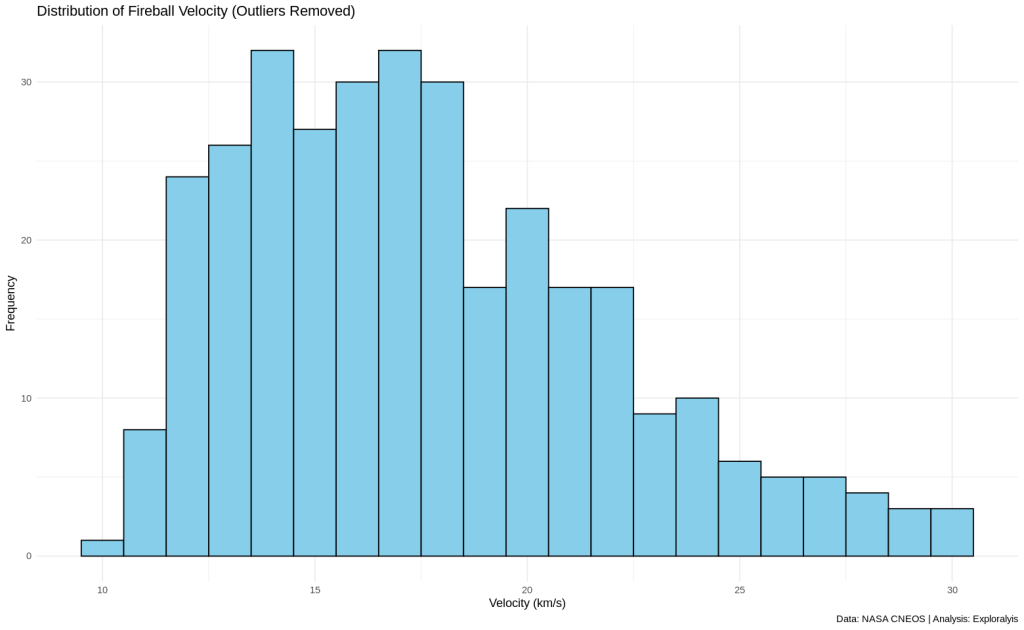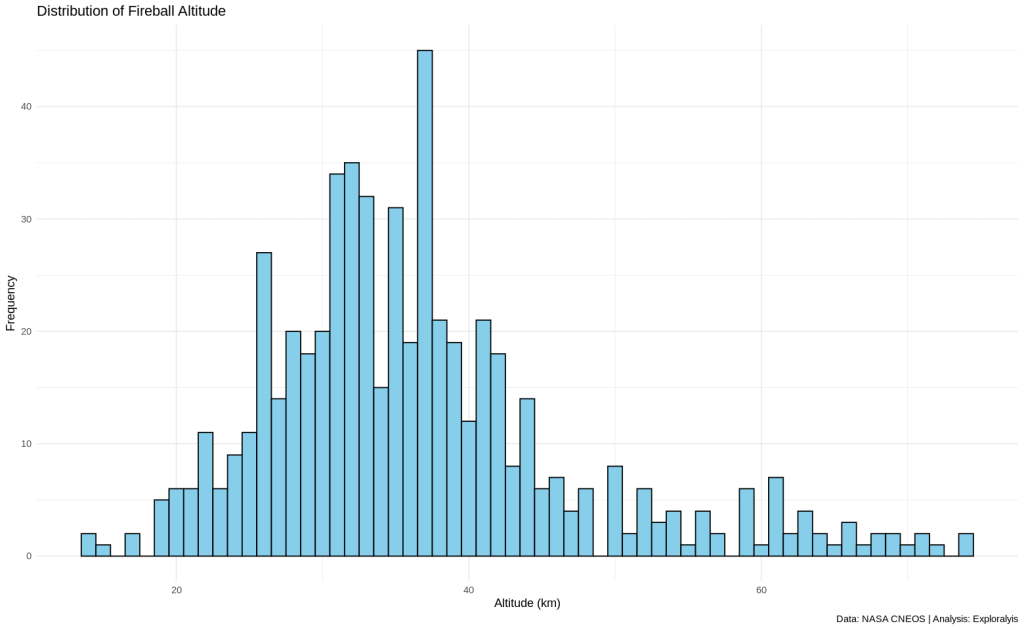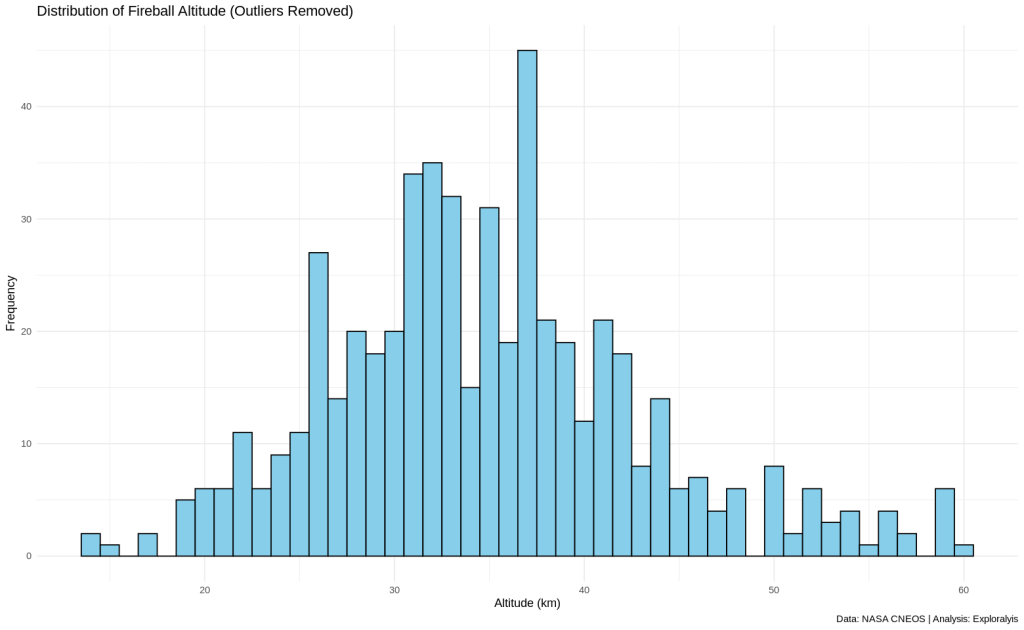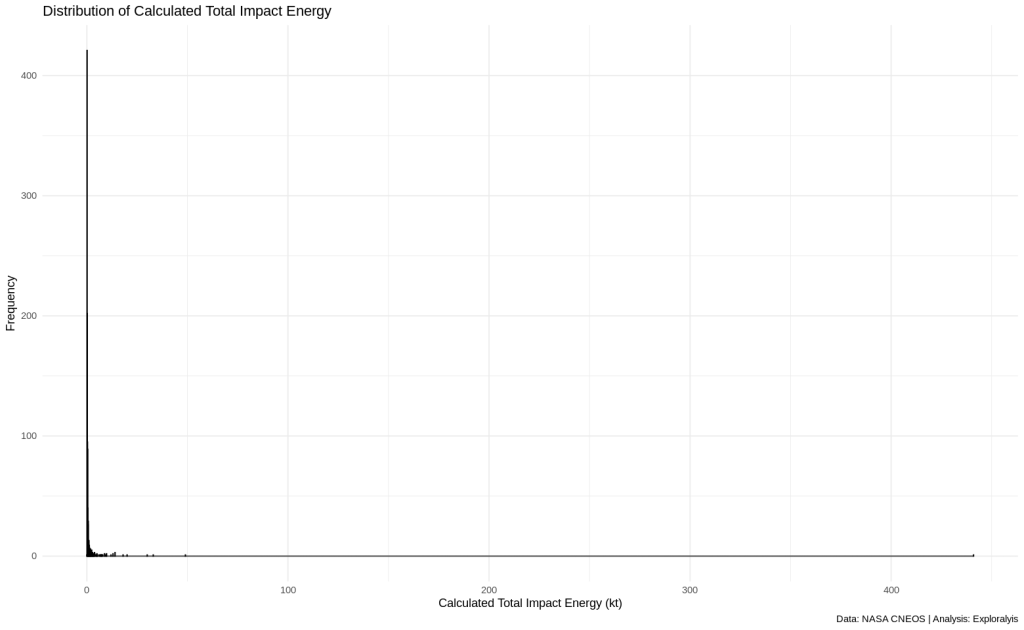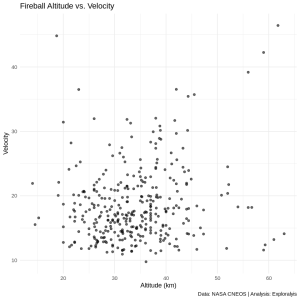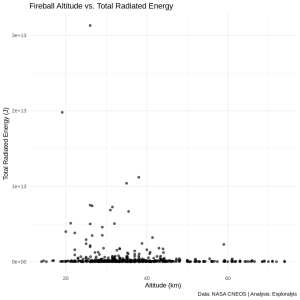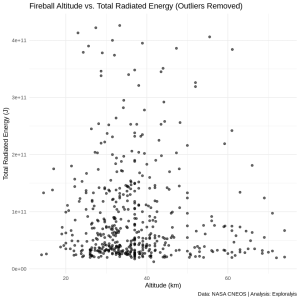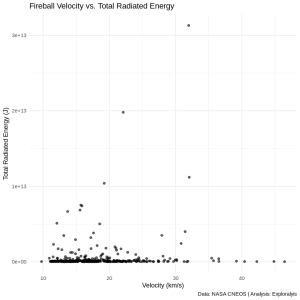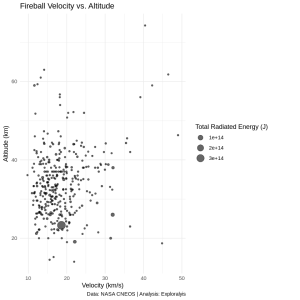On February 15, 2013, a blinding flash streaked across the morning sky above Chelyabinsk, Russia. Windows shattered, people were knocked off their feet, and shockwaves rattled buildings across the Ural region. That wasn’t a nuclear test — it was a meteor, a rock from space disintegrating in Earth’s atmosphere.
(Cover image: Chelyabinsk meteor vapor trail [Source: NASA])
NASA later estimated its impact energy at 441 kilotons of TNT, nearly 30 times the power of the Hiroshima bomb. The explosion injured over 1,500 people, mostly from flying glass — yet this event, massive as it was, didn’t involve any impact crater. It was an airburst — a cosmic fireball lighting up the sky.
But here’s the most fascinating part: this wasn’t a one-time cosmic fluke. According to NASA’s Center for Near Earth Object Studies (CNEOS), fireballs like this are surprisingly common — though most go unnoticed, burning harmlessly high above us.
NASA’s CNEOS Fireball Dataset records 1,045 observed fireballs between April 1988 and October 2025, collected from sensors and observations all over the world. These events tell an extraordinary story about how frequently Earth collides with debris from space — and how much energy is released in the process.
What Exactly Is a Fireball?
A fireball occurs when a meteoroid — a small rock from space — enters Earth’s atmosphere at tremendous speed, heats up due to air friction, and disintegrates. The process converts the meteor’s kinetic energy into light, heat, and pressure waves.
Most burn up completely before reaching the ground. The few that survive become meteorites.
Fireballs are essentially the universe’s reminder that Earth is still bombarded by cosmic debris — but luckily, our thick atmosphere absorbs most of the damage.
The Chelyabinsk Event: The Largest Recorded Fireball in Modern Times
Among all 1,045 events in NASA’s dataset, one stands out by far — the Chelyabinsk meteor.
- Date: February 15, 2013
- Impact energy: 441 kilotons of TNT
- Altitude of explosion: 23 km
- Speed: 18 km/s
- Size: 17–20 meters in diameter
- Mass: ~10,000 metric tons
To put this in perspective, the Hiroshima bomb had a yield of about 15 kilotons, and Nagasaki about 20 kilotons. The Chelyabinsk fireball was nearly 30 times stronger than Hiroshima’s explosion.
Fragments of the meteor rained down around Lake Chebarkul, with the largest piece weighing 654 kilograms. The event caught scientists off guard — it came from the direction of the Sun, making it invisible to ground-based telescopes.
Fireballs Happen Everywhere — and Anywhere
When we map all 1,045 fireball coordinates from 1988–2025, an interesting pattern appears: there is no pattern at all.
Fireballs appear to strike randomly across the globe — from oceans to deserts, from the poles to the equator. There’s no clear geographical preference, suggesting that Earth’s atmosphere is equally exposed to meteoroids from all directions.
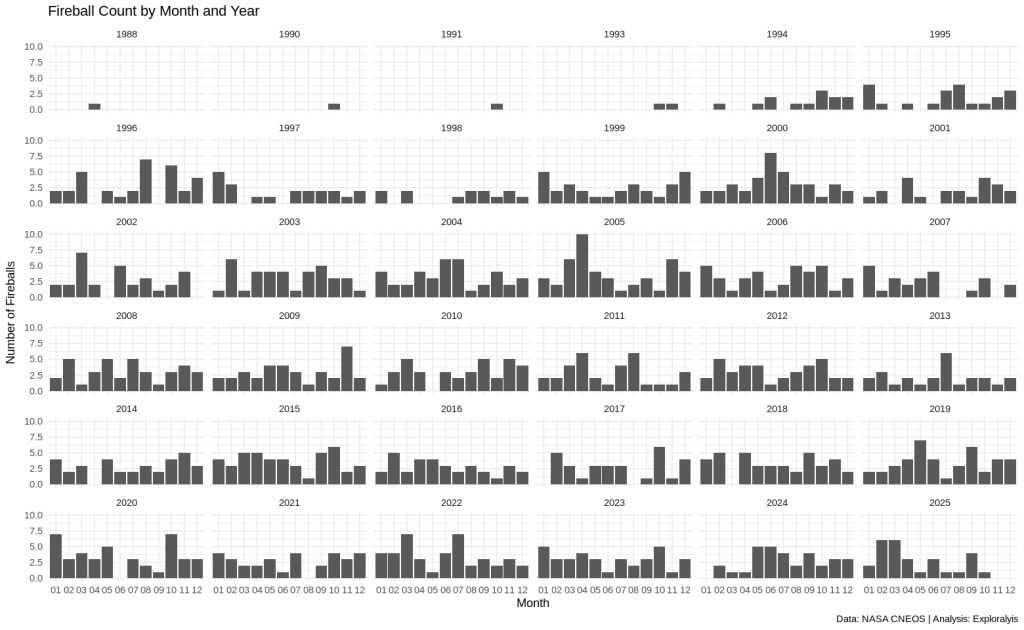
Similarly, when the data is broken down by month or year, there are no clear seasonal or annual trends. Fireballs can — and do — occur at any time of the year.
From this randomness, one clear message emerges: Earth is constantly being hit by small pieces of space debris, but our atmosphere does an excellent job of protecting us.
How Close Are Fireballs to Commercial Planes?
One of the more unsettling findings in the dataset is the minimum altitude of recorded fireballs — just 14 kilometers, which is only 2 km higher than the cruising altitude of commercial aircraft.
- Minimum altitude: 14 km
- Average altitude: 36 km
While that’s still a safe distance, it’s surprisingly low for an event that began its descent from space. It shows how deeply some meteoroids can penetrate before disintegrating, and how dynamic the upper layers of our atmosphere really are.
The Energy of the Cosmos: How Powerful Are Fireballs?
Fireballs vary widely in their impact energy, which NASA calculates in kilotons of TNT (kt).
- Median energy: 0.2 kt (equivalent to 0.01 of Hiroshima’s bomb)
- Mean energy: 1.12 kt
- Maximum: 441 kt (Chelyabinsk)
The data distribution is highly skewed to the right, meaning a few extremely powerful events dominate the overall energy total. Most fireballs release modest energy — enough to light the sky, but not enough to cause harm.
Let’s compare that energy scale:
- Hand Grenade (0.00002 kt) => 10,000× smaller than average fireball
- Hiroshima Bomb (15 kt) => 75× more powerful than the median fireball
- Chelyabinsk Meteor (441 kt) => 29× more powerful than Hiroshima
While most fireballs are small, the sheer frequency makes their total energy release impressive.
How Often Do Fireballs Happen?
Looking at data from 1994 onward, when records became consistent, we find an average of:
- 32 fireballs per year
- 2 fireballs per month
Collectively, these events release roughly:
- 3 kilotons (0.2 Hiroshima bombs) of energy per month
- 36.9 kilotons (2.5 Hiroshima bombs) of energy per year
That means Earth’s atmosphere harmlessly dissipates the equivalent energy of two or three nuclear explosions every year, all from natural cosmic impacts.
Speed of the Falling Stars
The average velocity of the fireballs is a stunning 18.6 kilometers per second — about 67,000 km/h.
For comparison:
- Commercial jet: ~0.26 km/s
- Rifle bullet: ~1 km/s
- Fastest manned aircraft (X-15): ~5.3 km/s
That means the average meteor is:
- 72× faster than a jet,
- 18× faster than a bullet, and
- 9× faster than the fastest plane ever flown.
These speeds explain why even a rock only a few meters wide can release as much energy as a nuclear weapon when it disintegrates.
No Correlation, Just Chaos
You might expect that faster meteors would explode with more energy, or that lower-altitude fireballs would be more destructive. Surprisingly, NASA’s data shows no meaningful correlations between these variables:
- Altitude ↔ Speed correlation => 0.22
- Altitude ↔ Radiated energy (light) => -0.06
- Speed ↔ Radiated energy (light) => 0.01
Essentially, the radiated energy (light), speed, and altitude of fireballs are statistically independent. Each fireball is a unique event shaped by its composition, entry angle, and the density of the atmosphere it enters.
The randomness reinforces how chaotic and unpredictable these cosmic encounters truly are.
From Data to Danger: Do Fireballs Ever Reach the Ground?
NASA estimates that roughly 160 meteors have actually hit Earth’s surface in the last 20 years — about 8 to 12 per year.
Thankfully, almost all of these impacts occur in remote or uninhabited areas, and none have caused significant casualties in recent decades. The last major destructive meteor strike was over 100 years ago, in Tunguska, Siberia (1908), which flattened over 2,000 square kilometers of forest.
A Global Effort to Watch the Skies
Recognizing the potential risk of larger impacts, organizations around the world — led by NASA’s Planetary Defense Coordination Office, the European Space Agency, and the United Nations — have stepped up to track and predict near-Earth objects (NEOs).
NASA’s CNEOS operates as part of the Jet Propulsion Laboratory (JPL), continuously monitoring space objects and calculating potential Earth impact probabilities.
The goal is simple: detect dangerous asteroids before they detect us.
Recent initiatives include:
- The DART Mission (Double Asteroid Redirection Test) — successfully deflected a small asteroid in 2022.
- Global early-warning systems integrating military and scientific sensors.
- Plans for infrared space telescopes to spot dark, sun-facing asteroids — like the one that caused the Chelyabinsk explosion.
Final Thoughts: A Fragile Shield Between Us and the Cosmos
NASA’s fireball dataset is both humbling and awe-inspiring. It shows that Earth’s atmosphere is an incredible shield, protecting us from a near-constant rain of high-speed cosmic debris.
Every few weeks, somewhere above the planet, a rock from space explodes with the energy of a small bomb — and yet we barely notice.
But the Chelyabinsk event reminds us that once in a while, the universe throws something much bigger our way — something capable of shaking cities, injuring thousands, or worse.
The data makes one thing clear: fireballs are not rare, they’re just usually harmless. Understanding them is not just a matter of curiosity — it’s essential for planetary defense.
So the next time you look up at a shooting star, remember — it might just be a fireball, a miniature explosion that traveled millions of kilometers before ending its journey in a brief, brilliant flash.
Data Visualizations
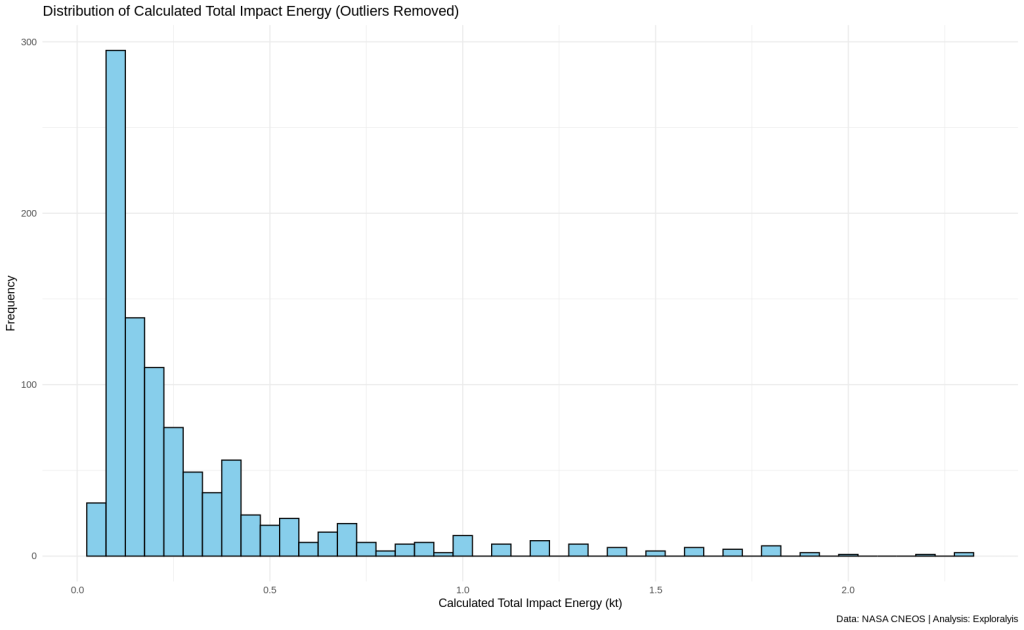
(Nugroho Budianggoro)

